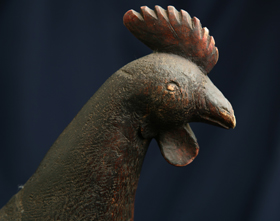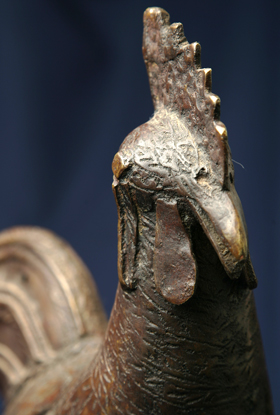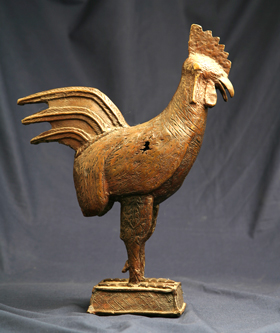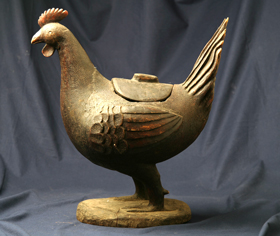| But ancient chicken DNA obtained from Easter Island may represent a genetic signature of an early Polynesian dispersal of chickens. |
|
Many would like to think so. Such evidence is used to support ancient trading contact between Polynesian and South American Indians. Some have passionately argued the case for pre-Colombian chickens, citing in particular the unusual Chilean Araucana and Passion Fowl breeds. The Araucana breed, for example, thought to be descended from indigenous Amerindian chickens, lays blue/green-shelled eggs and has distinctive plumage. Because features of its plumage are also found among Asian rather than Mediterranean chickens, it’s been hypothesized that the Araucana breed might have an Asian origin. A similar origin has been posited for Chile’s Passion Fowl. It is thought by some that these historic Chilean breeds could have arrived with early Polynesian or Dutch traders on the Pacific Coast of South America.
But a recent scientific paper published in the prestigious USA Proceedings of the National Academy of Sciences (29 July 2008) says that molecular evidence counters such an early introduction via Polynesia. Results of this research investigation into the putative ancient Polynesian lineage of Chile’s native chickens indicate an Indo-European genetic origin. This paper has generated a lively debate that is still on-going. (See, for example, the subsequent Letter to the Editor of PNAS from Storey.)
Interestingly, although this molecular evolutionary detective work provides no support for a pre-Colombian Polynesian introduction of chickens to South America, DNA sequences from ancient chicken remains obtained from two archaeological sites on Easter Island represent a genetic signature of an early Polynesian, rather than 15th century Spanish, introduction of chickens to the island.
But at present, there is no evidence to support an ancient Asia Pacific route for the introduction of Indo-European chickens into Chile.
‘The origin of South America’s first chickens remains debatable today,’ says Han Jianlin, an author of this paper, who heads the ILRI-Chinese Joint Lab in Beijing. ‘But I predict that we will have the definitive answer within the next five years. That’s how fast this molecular detective work is moving.’ ‘What is remarkable about this work,’ says Olivier Hanotte, another ILRI author of the paper, who leads an ILRI project to characterize indigenous animal genetic resources of the developing world, ‘is that it is allowing us to tackle major questions about human history that we would not have been able even to ask just 20 years ago.’
‘We didn’t set out in this research,’ says Hanotte, ‘to advance understanding of the history of the world’s farming societies. But that’s just where this research—conducted to characterize chicken genetic resources of and for the poor—has led us.~ OR Han Jianlin |
Research paper casts doubt on claims for pre-Colombian Chilean chickens
Reply




